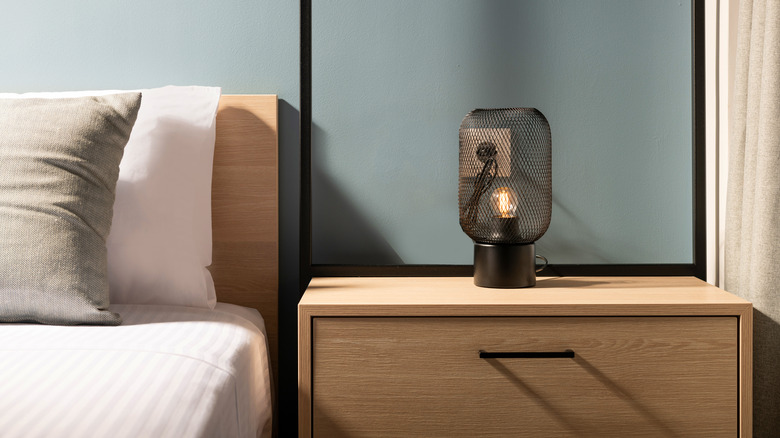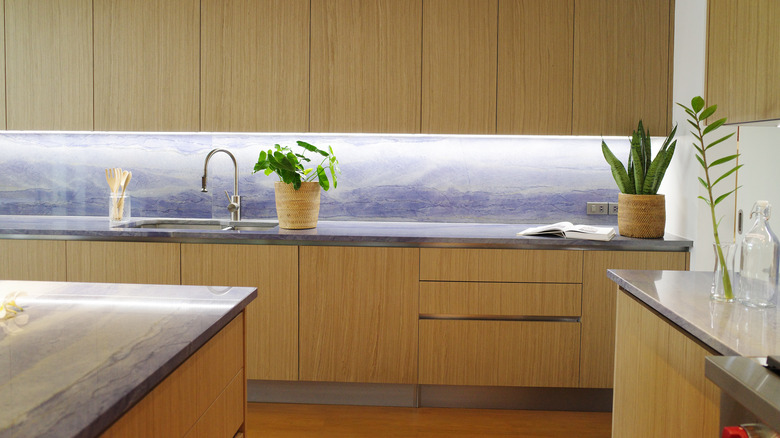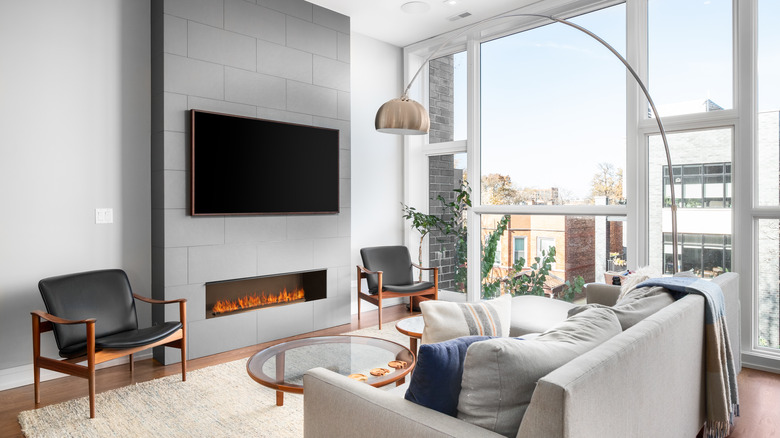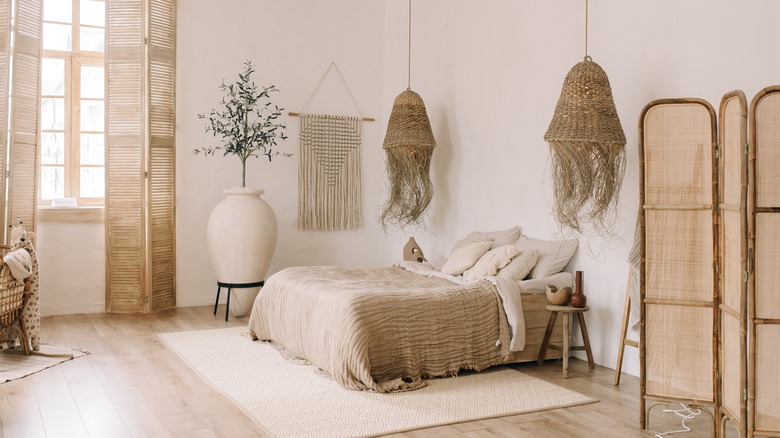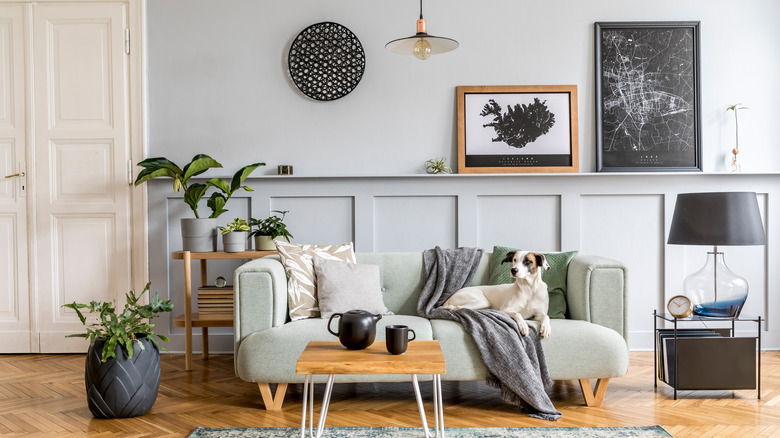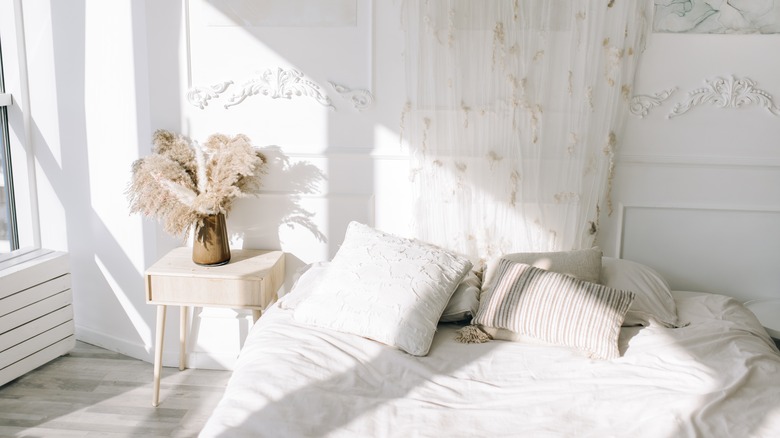How To Choose The Perfect Lighting For Your Space
You may not give much thought to the lighting in your home, but it plays an integral part in the comfort and function of every space. When you are trying to decide on what kind of lighting is right, there are many considerations. Are you looking for a functional overhead light in your walk-in closet? Do you need something to create a cozy nook for reading? Maybe you just want to highlight a valued work of art. Whatever your purpose, there is a lighting solution.
Credit is generally given to Thomas Edison for inventing the lightbulb, but there are several brilliant inventors to thank for interior lighting, according to Sculptalights. In fact, the first light that constantly ran on electricity was developed in 1835, over 40 years before Mr. Edison and his cohorts invented their version of the modern bulb. Since the 19th century, interior lighting has continued to evolve into the vast selection available today.
Function
As you consider the lighting options for your space, the first question to ask yourself is, "What do I need this light to do?" If you are looking for lighting to help you with a specific job, like cooking or sewing, then task lighting is your best option, states ErgoDirect. For example, under-cabinet lights are perfect to help you see what you are chopping in your kitchen.
Other functions of lighting include general overhead illumination, such as pendants or flush mount fixtures. These are used for cleaning, working, or any time you need a significant amount of light. In contrast, accent lighting helps create ambiance or focus light around a specific item. These kinds of fixtures include sconces, track lighting, and lamps.
If you want to add some dazzling effects to your space, there are some fun options. Curtain lights are essentially a curtain of sparkly Christmas lights you can use year-round to add a little light to a space along with a lot of ambiances. Hang curtain lights behind sheer window coverings for a diffused lighting effect. Lamps that project shapes or colored lights on the wall are also a great way to add interest to a dark room.
Size
The size of your room should determine the size of your light fixtures, although there are a few exceptions. When you are selecting an overhead light for your space, you want a fixture that matches the scale of the room. This is particularly important for hanging lights. A light over your dining table should be less than ¾ the diameter of your table, according to Lights Online. For basic overhead lights, measure both the length and width of your room in feet and add those numbers together to get the ideal width of a light fixture for that space. For example, if your room is 12 feet by 12 feet, the ideal overhead light fixture for this space would be about 24-inches.
You can have a little more fun with the sizing of your accent lighting. If your sofa wall is the focal point of the room, you can add interest by adding an oversized lamp or a pair of bold wall sconces.
Style
Style is an important consideration when selecting the right light fixtures for your home. Sleek modern pendants will look out of place in a BOHO-style bedroom, as would an ornate crystal chandelier in a farmhouse kitchen. Before you shop, Amanda Katherine suggests finding your style by first considering what you already have. To what metallic finishes are you drawn? Do you already have gold in your glam bedroom? Is your coffee table made of brushed nickel? Perhaps you like more natural elements, like jute and macramé instead. Keep these elements in mind as you shop, but remember everything doesn't have to match perfectly; it just needs to be complementary.
Some light fixtures are generic enough that they work in almost any space. Recessed lighting, basic track lights, or task lighting is more about function than form, so those options should be easy to select. When it comes to shopping for light fixtures for your home, selecting a style is pretty simple: buy what you like.
Variety
Unless you are selecting a single light fixture for a small space like a closet, you will want a variety of lighting options for your space. A single overhead light may be fine for cleaning the living room, but it is not ideal for movie night. Different types of lights have different jobs, so having a variety in your space ensures you have the right option for each specific need.
In your kitchen, you will probably want more functional lighting than in most other rooms. For this space, you will benefit from overhead and task lighting. If you have an eat-in kitchen, accent lighting, like lamps on a buffet, would improve the coziness of family dinners. Home Stratosphere suggests a wide variety of accent lighting in your living spaces to help bring focus to the important elements of the room, including the room's focal point, artwork, or simply to add interest to the space.
Natural
As you think about selecting the perfect lighting for your space, don't forget to consider the natural light you have available. The EPA states that the average American spends around 90% of their lives inside, so you can benefit from letting some natural light in. Your houseplants will also thank you for the extra sun. If you spend a lot of time in front of a computer, you might be able to boost your productivity by working in a space with natural light, according to Forbes. And of course, keeping the curtains open can save on the cost of electricity.
To make use of your natural light, identify the spaces in your room that have the best illumination, as well as those dark corners where sunlight does not reach. Add lamps or sconces in those spooking spaces for accent lighting to keep your home comfortably lit day and night.

